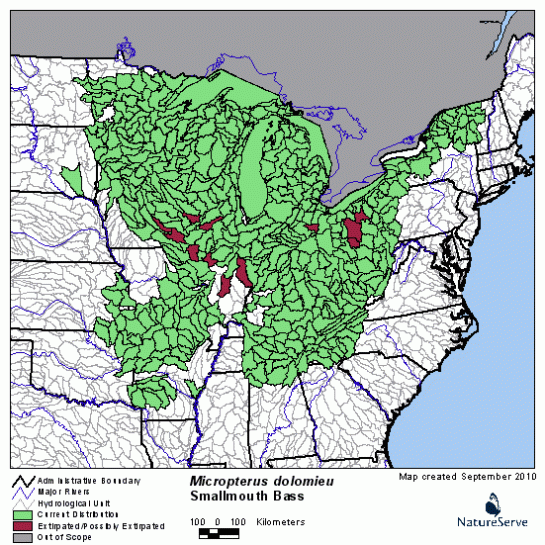DocWatson
Well-known member
New River Rat said:Captain Ahab said:You do realize that Small Mouth are not a native species either - correct?
I have been told that by various persons, yes. Do I believe it? I'm not certain. If you research long enough and read enough reports, you should come away uncertain as well. Various maps show the native range skirting the New River in North Carolina and Virginia, some ranges show it included, some not. However, the whole of West Virginia is usually shown as native, which includes the Ohio and its drainage's. These primary ones are the Kanawha and the New. Nobody can state that the smallmouth is non-indigenous for positive.
According to this abstract smallmouth are NOT native to the New River....
"Smallmouth bass (Micropterus dolomieu) are not native to the New River of Virginia (Jenkins and Burkhead 1993). They are a relatively new addition to the upper New River fish fauna (Haller- man et al. 2005). The historic native fish fauna consisted of few traditional game fishes, with the exception of channel catfish (Icta- lurus punctatus) and flathead catfish (Pylodictis olivaris) (Jenkins and Burkhead 1993)."
And from Wikipedia....
"The smallmouth bass is native to the upper and middle Mississippi River basin, the Saint Lawrence River–Great Lakes system, and up into the Hudson Bay basin.
Seems pretty definitive to me and I am certain that they are not native to that river system."
Lastly, this abstract states that the impact on the smallmouth population by muskie predation is minimal.




